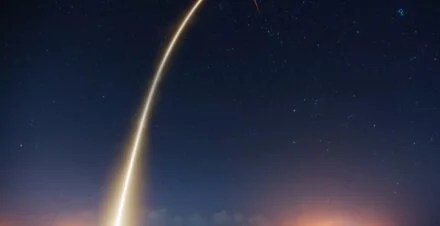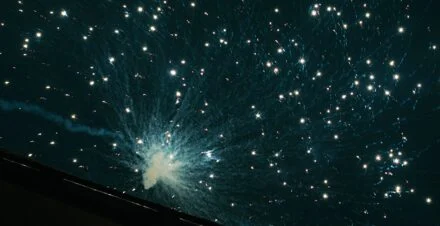It’s now been five weeks since the Russian ASAT demonstration that struck the Cosmos 1408 satellite, causing enormous amounts of new space debris to be generated in a heavily utilized altitude band in Low Earth Orbit (LEO).
In Part II of our analysis on this event, we considered the plausible explanation that the Cosmos 1408 destruction was caused by a non-hypervelocity impact, possibly even coupled with some explosive charge. The table below summarizes the two ends of the spectrum as discussed previously (hypervelocity vs. non-hypervelocity)— the actual event is probably somewhere between these two extremes which will confound a high confidence assessment of the impact initial conditions.
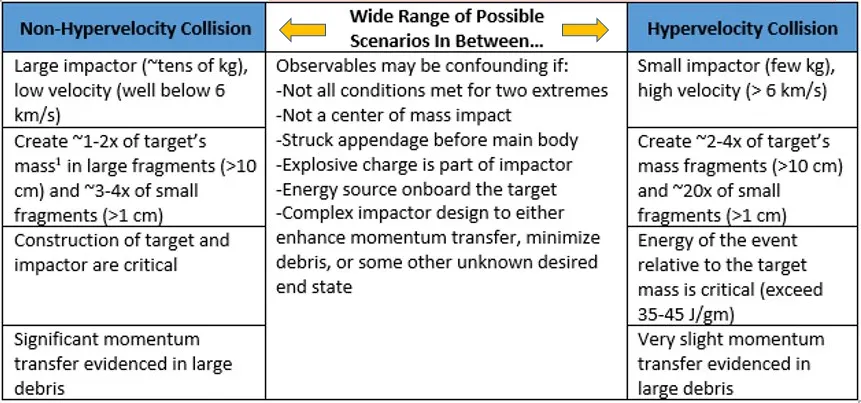
We also commented that the result may have been a less destructive event — fewer, but larger, new debris fragments — compared to a pure hypervelocity impact (that exceeded the 35–45 J/gm threshold for catastrophic breakup).
In the weeks following this event, LeoLabs has taken a two-fold approach to continue collecting data on the new fragments. First, our automated catalog tracking system matches that of the 18th Space Control Squadron, whereby we routinely track new RSOs in the LEO regime as they are added to the public satellite catalog. As of this writing, the number of Cosmos 1408 debris fragments in our system is close to 500, and will certainly continue to rise in the coming weeks and months. Our 3D LEO catalog visualization offers a daily glimpse at this, here:
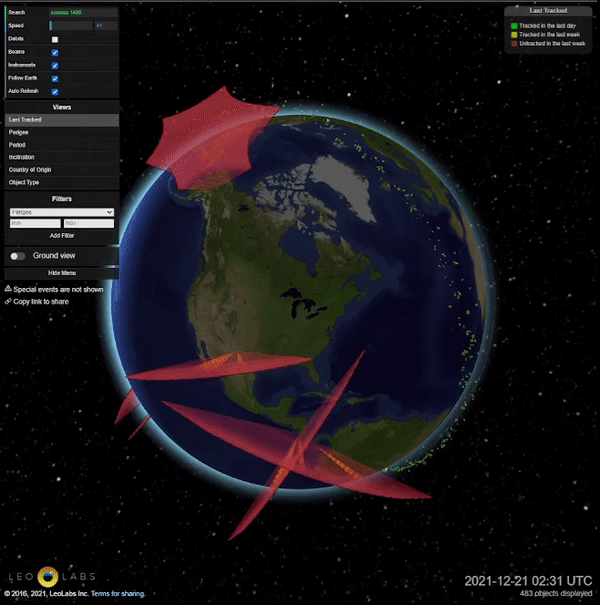
Our operational platform schedules radar observations for each fragment, collects measurement data on each radar pass, processes it in our orbit determination system to generate state vectors and ephemerides, and screens these ephemerides against our customers’ satellites to generate Conjunction Data Messages (CDMs) to alert satellite operators of any dangerous close approaches.
Second, LeoLabs’ Data Science team members have been monitoring the radar cross-section (RCS) values of the resulting debris through collection of additional observation data. The 30-day average for the RCS of Cosmos 1408 before the event was ~9 m². The table below summarizes the RCS values for the largest nine pieces detected by LeoLabs and their estimated masses.

Estimated mass for large Cosmos 1408 fragments
These larger objects are consistent with large appendages of the Cosmos 1408 spacecraft (four antennas, two solar arrays, and several booms) that likely would have been left intact (or largely intact) from this event.
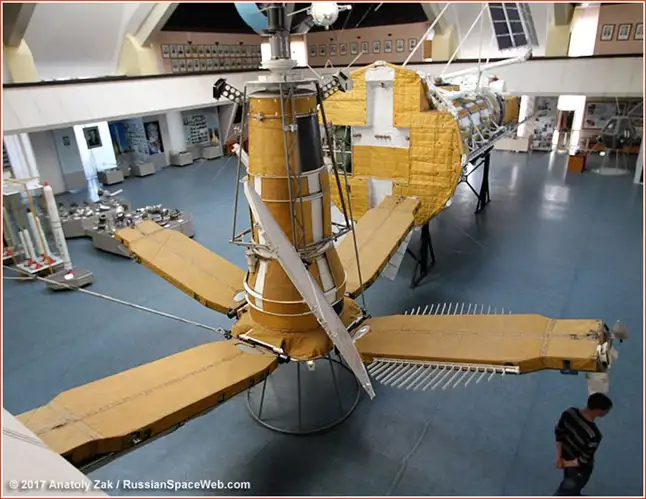
Image credit: https://www.russianspaceweb.com/tselina.html
The largest object was assumed to have an area-to-mass ratio of 0.01 m²/kg (i.e., basically an intact portion of the satellite) while for the other fragments an area-to-mass ratio of 0.075 m²/kg is applied (i.e., typical for chunky debris fragments). Using these conversions, the mass of these objects is estimated to be ~400 kg, or roughly 23% of the total mass of 1750 kg*.
While we have not compiled a complete RCS distribution for the debris resulting from this event, the preliminary analysis shows that the average RCS for hundreds of fragments being characterized is ~0.050 m², though there is clearly a range of RCS values. These smaller fragments will likely have a larger area-to-mass ratio than the larger chunky fragments.
Using the typical value for trackable debris fragments of 0.10 m²/kg produces a total of ~2,700 more fragments to account for the additional 1,350kg (total mass estimate from debris would equal the pre-event estimate of ~1,750 kg).
It should be noted that the smallest fragments generated in a breakup event only need a small amount of mass to represent a large number of fragments. For example, 1,000 one cm fragments (i.e., solid spherical objects) made of aluminum amount to a little over 10 kg. Similarly, if the average RCS for the smaller debris was closer to 0.025 m², then the total number of trackable fragments would grow from ~2,700 to ~4,000.
This highlights the sensitivity of the impact conditions on the debris liberated, as hypervelocity events typically create many more fragments smaller than 10 cm than do explosions or non-hypervelocity impact-induced fragmentations. The real question is, how many of these smaller (<10cm) fragments were created, since they still constitute mission-terminating collision risks but are currently not reliably cataloged. (LeoLabs will start to catalog previously untracked sub-10cm debris starting in 2022.)
In conclusion, further analysis continues to lend credence to a non-hypervelocity impact encounter. As stated previously, this just means fewer fragments but ones that are likely longer-lived (due to their larger mass) than “typical” collision-induced fragments. However, much analysis is still ahead of us. As we refine the RCS values for this cloud of debris, we will report our findings as a means to better understand what occurred on November 15 and, more importantly, to characterize the long-term mission-terminating collision hazard posed by this event to satellites in LEO.
While it is tempting to try and reconstruct the exact conditions of the breakup, we also don’t want to focus all our efforts here because the end result of the event is what’s most important — substantially increased risk for many operational satellites.
The statistical probability of collision for satellites with mission-terminating debris in the 300–800km altitude range has likely doubled due to this event, and will remain high for many years.
The only way to mitigate this risk is to catalog these fragments, and track them accurately and frequently to produce actionable conjunction alerts for satellite operators. LeoLabs is already doing this to support our customers, and will only increase the cadence and fidelity of tracking by deploying multiple additional S-band radars around the world over the next 12–24 months.
It should be noted that in our previous analysis we stated a 2,200 kg mass for the Tselina-D, but upon closer review of sources the mass of the satellite is likely 1,750 kg as stated by the manufacturer KB Yuhznoe. (Thanks to Jonathan McDowell for the note on Twitter :)) No matter how you slice it, this target was at least twice as massive as Fengyun 1C, the target for the Chinese ASAT test in 2007.

